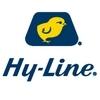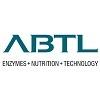Explore all the information on
Enzymes in poultry nutrition
Enzymes are proteins involved in all anabolic and catabolic pathways of digestion and metabolism. Digestive enzymes are categorised as endogenous or exogenous. Endogenous enzymes are produced by the animal and exogenous enzymes are administered from outside. Enzyme supplementation decreases nutrient loss through excreta, reduces diets nutritional levels, improves nutrient availability; thus, enhances production efficiency and profitability. In addition, exogenous enzymes hydrolyse non-starch polysaccharides, increase the usage of feed energy, reduce negative impacts of non-digestive residues on digesta viscosity, and improve gut microbial ecosystem. Cellulase, glucanase, pectinase, xylanase, galactisidases, phytase, non-starch polysaccharides degrading enzymes, amylase, lipase, cellulase, and protease are the most common enzymes used in poultry feed.
INTRODUCTION Corn and soybean meal are ingredients that have a good digestibility, however depending on the storage, crop and variety, these ingredients may have a change in their nutritional quality. For broilers, these ingredients constitute around 70 and 30% of the diet, respectively. Thus, any small improvement in their quality significantly influences the performance of the broiler chickens and the meat production cost. The carbohydrate fraction of cereal ingredients has...
Comments : 2
Recommendations: 1
In the first half of 2023, Life Rainbow mycotoxin analysis lab collected 141 feed samples of raw materials and feed mills in farms and analyzed them. The survey provides essential information on the feed pollution situation of Aflatoxins (B1, B2, G1, and G2), Zearalenone, Fumonisins (B1, B2, and B3) and deoxynivalenol (DON) in Taiwan. All the samples were analyzed using ELISA Mycotoxin analysis kit. Results: 141 feed samples were collected, and 80.1% were...
Comments : 2
Recommendations: 2
1. INTRODUCTION Substantial efforts have been made to replace expensive cereals with cassava in poultry feeding. Cassava (Manihot esculenta crantz) contains a large quantity of starch, therefore it is certainly worthwhile to be used as an energy source for poultry feed [1]. However, cassava contain high level of insoluble fiber which are not well digested by poultry [2]. Over the past decade, dietary enzymes have been used as a tool to improve nutrient utilization in chicken...
Comments : 0
Recommendations: 0
John Boney (Penn State University) offers insights and recommendations regarding the importance of pellet quality and its benefits on performance, during this Engormix interview....
Comments : 2
Recommendations: 6
.jpg&w=3840&q=75)

Candidate Genes Associated with Survival Following Highly Pathogenic Avian Influenza Infection in Chickens
Suggested link
INTRODUCTION Providing adequate quantities of animal protein to meet the demands of a continuously growing population requires that livestock producers must increase the production efficiency of farm animals. This can be achieved through improved genetics, management, and nutrition. Furthermore, feed ingredient prices continue to increase, resulting in minimizing the profit for the producers and forcing them to seek cheaper alternative ingredients, typically of lower quality and...
Comments : 1
Recommendations: 1
INTRODUCTION Reducing the production cost of quality meat and eggs for the ever-growing world population is a prime target of the poultry industry. Conventional feed ingredients like corn and soybean meal are widely used in broiler feeding programs, which increase the competition among food and feed and lead to raise production costs (Donohue and Cunningham, 2009; Stefanello et al., 2016). Several strategies were attempted to minimize the cost per unit production, such as...
Comments : 0
Recommendations: 0


Mycotoxin Testing in the Feed Chain: A Risk Prevention Strategy for Raw Material Suppliers, Grain Storage Facilities and Processors, and Feed Manufacturers
Suggested link
About the study Phytase supplementation has become a standard practice for poultry diets to enhance phosphorus (P) utilization and subsequently reduce P excretion. Previous phytase studies on hen performance, eggshell and bone quality have been done over short durations and using hens of varying ages. The knowledge gap is that there are no long-term phytase studies covering the rearing period through the end of production cycle. The objective of this study was to...
Comments : 2
Recommendations: 1
Nutritional strategies to improve performance of broilers offered reduced crude protein (RCP) diets supplemented with crystalline amino acids are of interest to the poultry industry. We hypothesized that the dietary inclusion of moderate amounts of insoluble fibre would stimulate gizzard function and increase the retention time of digesta in the foregut allowing more time for exogenous protease to act on their substrates leading to greater digestibility of protein/amino acids and better...
Comments : 1
Recommendations: 0
There is continued interest in using sorghum as an alternative to wheat in Australian poultry diets, but there is concern about the comparatively lower digestibility of sorghum-based diets. This study examined if it is possible to accelerate sorghum digestion in young birds by targeting fermentation of the xylan in its endosperm cell walls. The hypothesis was that supplementing sorghum-soybean meal based diets with a combination of xylo-oligosaccharides (XOS), xylanase and wheat bran would...
Comments : 1
Recommendations: 0
Recent studies have shown that the decreased performance of broilers associated with feeding a reduced crude protein (RCP) diet cannot be fully recovered by supplementing essential amino acids (Hilliar et al., 2019). We hypothesized that the dietary inclusion of moderate amounts of insoluble fibre would improve gizzard function and protein/amino acid digestibility that could help to restore the performance loss associated with feeding a RCP diet. This study investigated the effects of oat...
Comments : 1
Recommendations: 0
I. INTRODUCTION Phytases have been heavily researched for decades and been used commercially since the early 1990s). Phytase from microbial origin is therefore added to monogastric diets as it can reduce the incorporation of inorganic P sources in the feed, reducing feed cost and P excretion in the environment. Phytate is the main storage form of phosphate in plant matter and in vegetable feed ingredients where it can normally be found in concentrations of 5 to 25 g/kg (CVB,...
Comments : 2
Recommendations: 1
Summary This study was conducted to test the efficacy of phytase in low phosphorus and calcium diets in the late production cycle for maintaining the productivity, eggshell and bone quality of hens fed low phosphorus and calcium. Problem Exogenous phytase supplementation has become a standard practice for poultry diets to liberate available phosphorus and reduce excretion of phosphorus in manure. Many studies showed that phytase supplementation increased egg...
Comments : 10
Recommendations: 4


Effect of <i>Cordyceps militaris </i> Hot Water Extract on Immunomodulation-associated Gene Expression in Broilers, Gallus gallus (Extract)
Suggested link
In recent years protein feed ingredients are consistently increasing in cost and protein in poultry diets has become one of the most expensive nutrient. Urbanization is putting pressure to produce more and high quality protein sources in less space. Neutralizing substandard quality feed ingredients with effective tools has also become a new concern. In parallel people are more concerned on impact of animal agriculture on environmental pollution. Hence research has focused in the direction to...
Comments : 19
Recommendations: 8
I. Introduction Feed is the largest cost in poultry production, particularly in recent times due to the increased price of protein and energy sources. Feed cost can be reduced with the inclusion of alternate protein and energy sources like pearl millet, deoiled rice bran (DORB), meat and bone meal (MBM), dried distillers’ grains with solubles (DDGS) and mustard deoiled cake (MDOC) replacing soya bean meal (SBM) and corn. However, these alternate ingredients have low...
Comments : 0
Recommendations: 0


Developing effective natural solutions for animals - Liptosa: 2020 Summary and 2021 Challenges
Suggested link
The increasing prices of major feed ingredients have prompted animal nutritionists to use inexpensive raw materials in their diet formulations to lower feed cost. However, due to their relatively lower digestibility, diets formulated with these raw materials often lead to poor gut health status and animal performance. For instance, poor protein digestibility results in the formation of toxic metabolites that can impair gut health and subsequently confer negative effects on broiler...
Comments : 0
Recommendations: 0
I. Introduction Typical Australian broiler diets contain 2.5-3.0 g/kg phytate-P or roughly 10.0 g/kg phytate; therefore, phytase is included into every Australian broiler diet. As phytase is capable of increasing the availability of phosphorus, calcium, sodium, amino acids and energy content of diets, these nutrients may be decreased in the feed formulations as ‘matrix values’ without adverse effects on the birds’ growth performance (Dersjant-Li et al. 2020)....
Comments : 0
Recommendations: 1
There is increasing evidence that supplementing small amounts of prebiotic xylo-oligosaccharides (XOS) into poultry diets has positive effects on bird performance and gastrointestinal health. Soluble XOS that reach the caeca intact are utilised by beneficial bacteria, inducing positive effects such as increased production of short chain fatty acids (Aachary & Prapulla, 2011). Commercial endo-xylanases are added to diets to reduce digesta viscosity, but have the side effect of producing...
Comments : 0
Recommendations: 1
INTRODUCTION It is imperative to identify factors that inhibit the digestibility of nutrients for successful commercial poultry production. The non-starch polysaccharides (NSP) like substances of hemicellulose, cellulose, and pectin can reduce nutrient digestibility in poultry (Choct, 1999). Among the NSP, β-mannans are a group of hemicelluloses, which are present in many ingredients used for poultry feeds like soybean and other leguminous seeds. It occurs in the forms of...
Comments : 1
Recommendations: 1
Wheat has traditionally been the target substrate ingredient for xylanase application, due to its high arabinoxylan content causing increased digesta viscosity. However, numerous studies have highlighted the benefits of supplementing non-viscous corn-based diets with xylanase, on broiler performance and energy, protein and dry matter digestibility (Rabello et al., 2021; Stefanello et al., 2016). This is thought to be attributable to production of prebiotic xylo-oligosaccharides (XOS) as a...
Comments : 0
Recommendations: 1
I. Introduction Phytase, apart from increasing phosphorus (P) availability from plant ingredients, improves availability of non-P nutrients like Ca, amino acids (AA), and energy (AME) by facilitating the breakdown of phytate P and thus negating its antinutritional effects (Dersjant-Li et al. 2016). Phytase along with carbohydrase enzymes could improve productivity of chickens with a lower feed cost when proper downspec (reduction of nutrient levels in the diet) is applied. It is...
Comments : 0
Recommendations: 0

.jpg&w=3840&q=75)


























